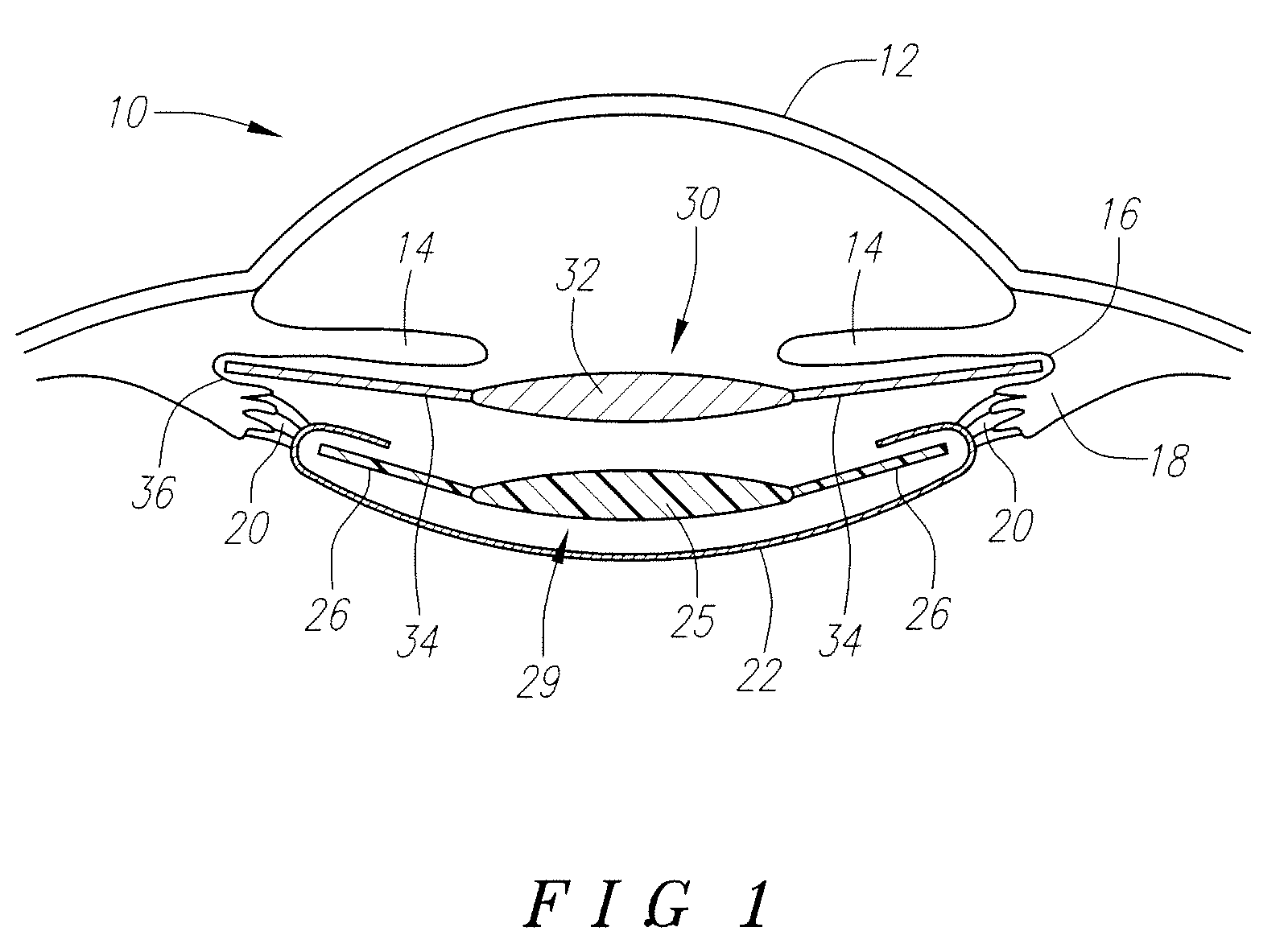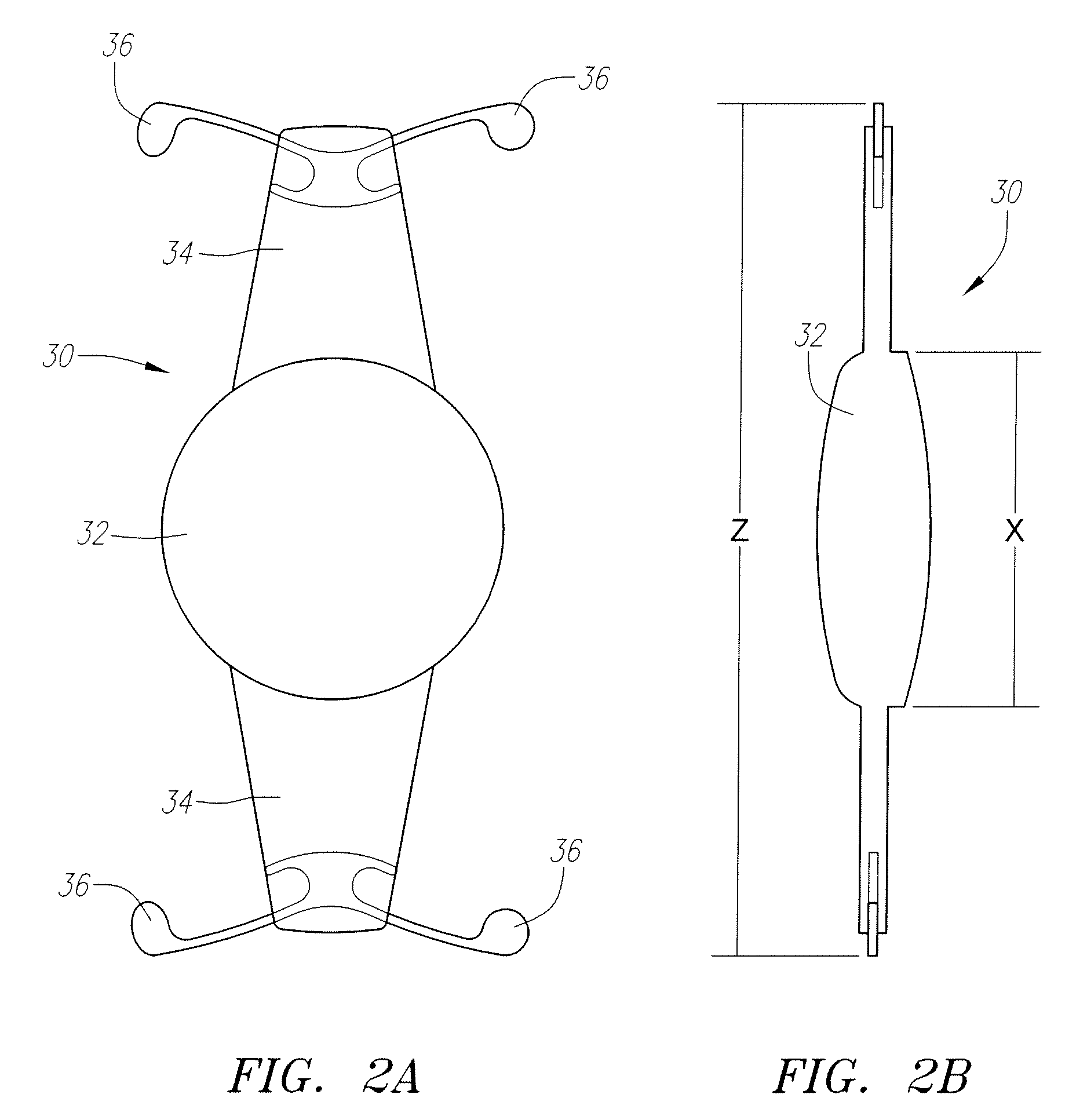Toric sulcus lens
a technology of toric sulcus and lens, applied in the field of toric sulcus lens, can solve the problem of not allowing the optic to touch the toric sulcus-placed non-accommodating lens
- Summary
- Abstract
- Description
- Claims
- Application Information
AI Technical Summary
Benefits of technology
Problems solved by technology
Method used
Image
Examples
Embodiment Construction
[0012]Turning now to the drawings and first to FIG. 1, the same provides cross-sectional view of the human eye 10 showing part of its structure including the cornea 12, iris 14, sulcus 16, ciliary muscle 18, zonules 20, and capsular bag 22. A standard accommodating IOL or standard IOL 24 is shown implanted in the capsular bag and having a lens 25 and haptics 26. This lens 25 can be an accommodating or standard IOL.
[0013]The improvement according to the present invention is implantation of the “piggyback” lens as described above which is identified as 30 in FIG. 1 and is a sulcus toric lens having an optic 31, haptics 34 and fixation loops 36 (only the left one being shown) on the ends of the haptics 34.
[0014]FIGS. 2a and 2b further illustrate the structure of the piggyback lens 30 showing the optic 32, haptics 34 and fixation loops 36 in further detail in FIG. 2a. The lens 30 does not have hinges like accommodating lenses. FIG. 2b is a side view to illustrate the dimension of the di...
PUM
| Property | Measurement | Unit |
|---|---|---|
| diameter | aaaaa | aaaaa |
| diameter | aaaaa | aaaaa |
| diameter | aaaaa | aaaaa |
Abstract
Description
Claims
Application Information
 Login to View More
Login to View More - R&D
- Intellectual Property
- Life Sciences
- Materials
- Tech Scout
- Unparalleled Data Quality
- Higher Quality Content
- 60% Fewer Hallucinations
Browse by: Latest US Patents, China's latest patents, Technical Efficacy Thesaurus, Application Domain, Technology Topic, Popular Technical Reports.
© 2025 PatSnap. All rights reserved.Legal|Privacy policy|Modern Slavery Act Transparency Statement|Sitemap|About US| Contact US: help@patsnap.com



